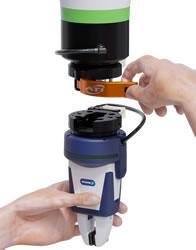Engineers Devise New Method to Heighten Senses of Soft Robot
Autopilot vs. Autonomous
MIT's Modular Robotic Chain Is Whatever You Want It to Be
Boeing buys Liquid Robotics to boost autonomous surveillance at sea
Going Where No Man Has Gone Before: What Does the Future Hold for Automation in the Service Industry?
Stanford study concludes next generation of robots won't try to kill us
Robotics entrepreneur unveils spider creation set to take gaming world by storm
AI-powered Motion
Who's Driving That Truck?
Innovative Machine Learning Training Method Opens New Possibilities for Artificial Intelligence
Irishman's soft robotics exosuit wins major tech award
Developing Communications and Mapping for a New Generation of Driverless Cars
Care-O-bot 4 celebrates its premiere as a shopping assistant
Relay Is a Robot Butler Coming to a Hotel Near You
Self-drive delivery van can be 'built in four hours'
Records 766 to 780 of 1079
First | Previous | Next | Last
Featured Product

